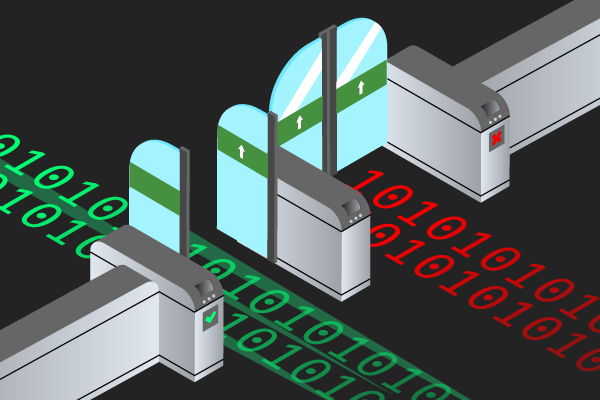
What Are Quality Gates?
Quality gates are just what they sound like: They ensure the delivery of high-quality software by serving as quality milestones (or “gates”) during various stages of the software development lifecycle (SDLC), preventing bad code from passing through. Here, we explain what are quality gates, how they work, and how to implement them using static analysis.
Read along or jump ahead to the section that interests you most:
➡️ Manage Your ci/cd pipeline with Static Analysis
Back to top
What Are Quality Gates?
Quality gates are checkpoints implemented during an IT or development project that require the minimum threshold is met before proceeding to the next phase of development. A quality gate blocks substandard code from deployment, helping to ensure a higher quality product.
With a quality gate, you can enforce quality and other ratings based on metrics and conditions you set for your code. It is a great way to identify bottlenecks and problem areas so that you don’t run into them further down the line.
Quality gates are used in DevOps to measure quality throughout the development or quality assurance processes and identify vulnerabilities that prevent later delays and rework. They are project management measures put in place during important junctures, so that teams can be confident moving forward knowing their code has met the quality standards required at that stage.
Back to topWhy Are Quality Gates Important in the DevOps Pipeline?
Quality gates help ensure the stability and reliability of the software. The iterative nature of quality gates helps quality assurance engineers and developers alike track errors and resolve issues as soon as they arise, improving quality and ROI. As the team sets the conditions for passing through the gate, quality gates can be customized as needed at any time, depending on the needs of the project.
There are many benefits of building quality gates into your development pipeline:
Improve overall quality and preserve security: Strategically positioned quality gates serve as benchmarks for quality throughout the SDLC and maintain security by pointing out weaknesses early and often in the code. They can be used as part of a shift-left methodology to detect issues early in the SDLC and can be implemented effectively and efficiently into the CI/CD pipeline.
Save time in code reviews: Quality gates can serve as a checklist to keep track of the requirements you have achieved so far, which other developers can quickly review as they evaluate code.
Optimize software performance: Ideally, code is clean, maintainable, and reusable. Quality gates provide the measurements to help analyze code performance and remove code that is redundant or bogging down the system. You can set up software metrics for your quality gate such as cyclomatic complexity.
Continuous monitoring of the codebase: Quality gates continuously monitor the quality of the source code, providing consistent feedback on key metrics set by the organization.
Compliance verification: Quality gates can be set up so that they ensure and verify code compliance with established coding, safety, and security standards.
Back to topHow Quality Gates Work
As part of continuous integration, pipeline quality gates ensure the project meets the predefined criteria that means it can move on to the next stage of development. The code goes into a staging repository until the requirements are met.
The statuses of a quality gate are:
- Pass: Requirements are met, and production can continue.
- Warn: Requirements may be close to being met, or barely pass, so the code should be verified before being allowed to move to the next stage.
- Fail: Requirements are not met. Flagged issues should be resolved before production can continue.
A best practice for quality gates is to implement them at each crucial stage of development:
- Planning
- Coding
- Building
- Testing
- Release
- Deployment
The trick is to limit them to these main phases because the more gates you add, the more complex testing becomes, which could lead to costly delays. Strategically setting up quality gates in your CI/CD pipeline also means you don’t have to set them up sequentially, but you can have multiple concurrent pipelines and parallel testing or overlapping testing.
Back to topUsing Klocwork and Helix QAC as Quality Gates
Whether you are performing incremental analysis, differential analysis, or integration analysis, static analysis/SAST tools are designed to optimize DevOps and DevSecOps processes, and can act as a type of quality gate that checks for code quality and security issues within the code — without slowing down development.
Some static analysis tools — like Klocwork and Helix QAC — can perform a merge-request analysis as new code comes in. The quality gate prevents the merging of your commit into a protected branch until the set conditions are met. For example, you can use Klocwork as a quality gate in GitLab or similar CI environment.
While implementing quality gates takes some initial planning, it can help streamline your DevOps process. Using the right tools to build in quality gates speeds up your pipeline and ensures your code is of the highest quality.
See how your continuous integration process can benefit from Perforce Static Analysis.

